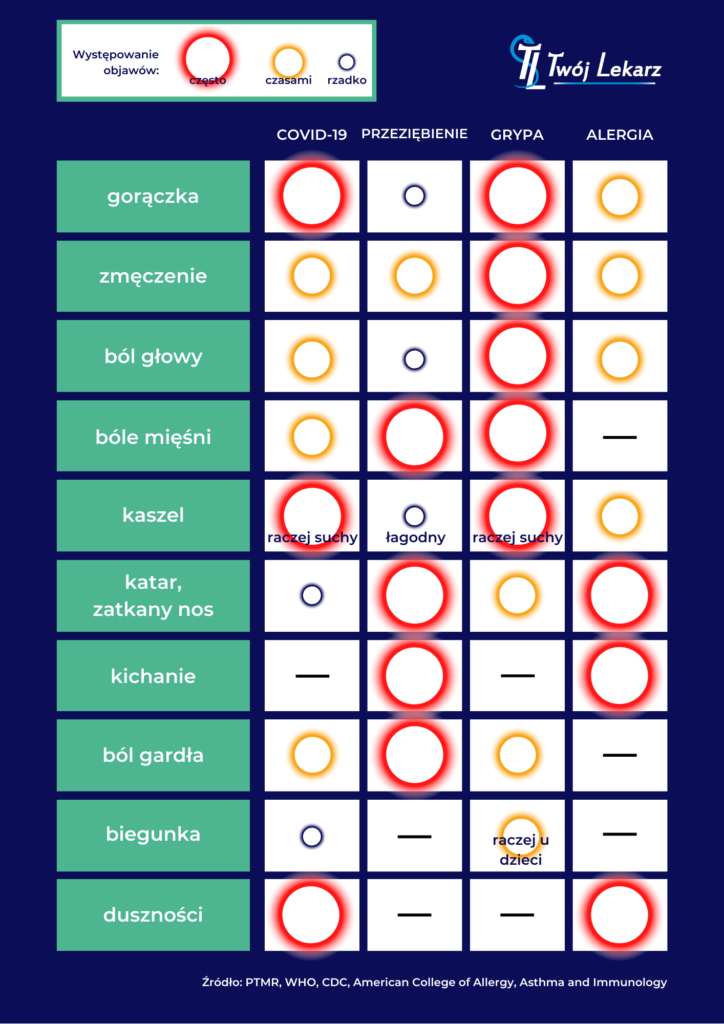



May 1, 2020
How can we distinguish diseases with similar symptoms and transmitted in a similar way? This is a big challenge for specialists, not to mention patients who are anxiously monitoring their health during the coronavirus epidemic. In this situation, it is easy to succumb to suggestion and misinterpret it.
Allergy
Let's start with allergies, which are fundamentally different from the diseases presented here. They are an excessive response of the immune system to contact with an allergen. For respiratory allergies caused by pollen, for example, the characteristic symptoms are a runny nose, sneezing, conjunctivitis and watery eyes. These are symptoms that are not specific to COVID-19. However, the similarity is shortness of breath, which can occur in both allergic asthma and coronavirus infection.
Cold, seasonal flu, covid-19 – viruses on the attack!
Both colds and flu, as well as COVID-19, are infections caused by viruses. They also share the same transmission method, which is droplet transmission. That is why it is so important to follow basic hygiene rules, including frequent hand washing and disinfecting surfaces on which viruses can survive for up to several days. It can be assumed that taking these precautions, combined with minimizing contact with other people, protects against colds, flu, and COVID-19.
The common cold is a relatively mild illness with a short course. The infection usually resolves on its own after 3 to 7 days. In the case of seasonal flu, symptoms appear more quickly than in the common cold, are much more severe and last longer. According to scientists, the SARS-CoV-2 virus that causes COVID-19 spreads more easily from person to person than cold and flu viruses. According to the World Health Organization, one sick person infects more than 2 people on average.
Similarities and differences in the course of viral infections
In most infected people, the SARS-CoV-2 virus will cause a mild infection. Fatal cases mainly concern people from risk groups. Older people and those with chronic diseases such as asthma, diabetes, heart disease and cancer should especially reduce the risk of infection. They are the ones who should be aware of what symptoms to look out for.
COVID-19, like the flu, is characterized by high fever and a dry cough. In the course of coronavirus infection, runny nose and sneezing rarely appear, but patients more often complain of shortness of breath. In addition, fatigue, sore throat, headache and muscle pain, which usually accompany colds and flu, are less common in COVID-19.
The following list will help you systematize the characteristic symptoms and their intensity.


Who we are
In our work, we are guided by the idea of a family doctor who provides the patient with comprehensive care at all times, not only when they are ill. Our mission is to take care of the health of residents on a daily basis. We provide health education and promote prevention.
Copyright © Wrocław 2021 NZOZ Your Doctor Sp. z o. o. All Rights Reserved.
Website created by KomuKoncept: www.komukoncept.pl






